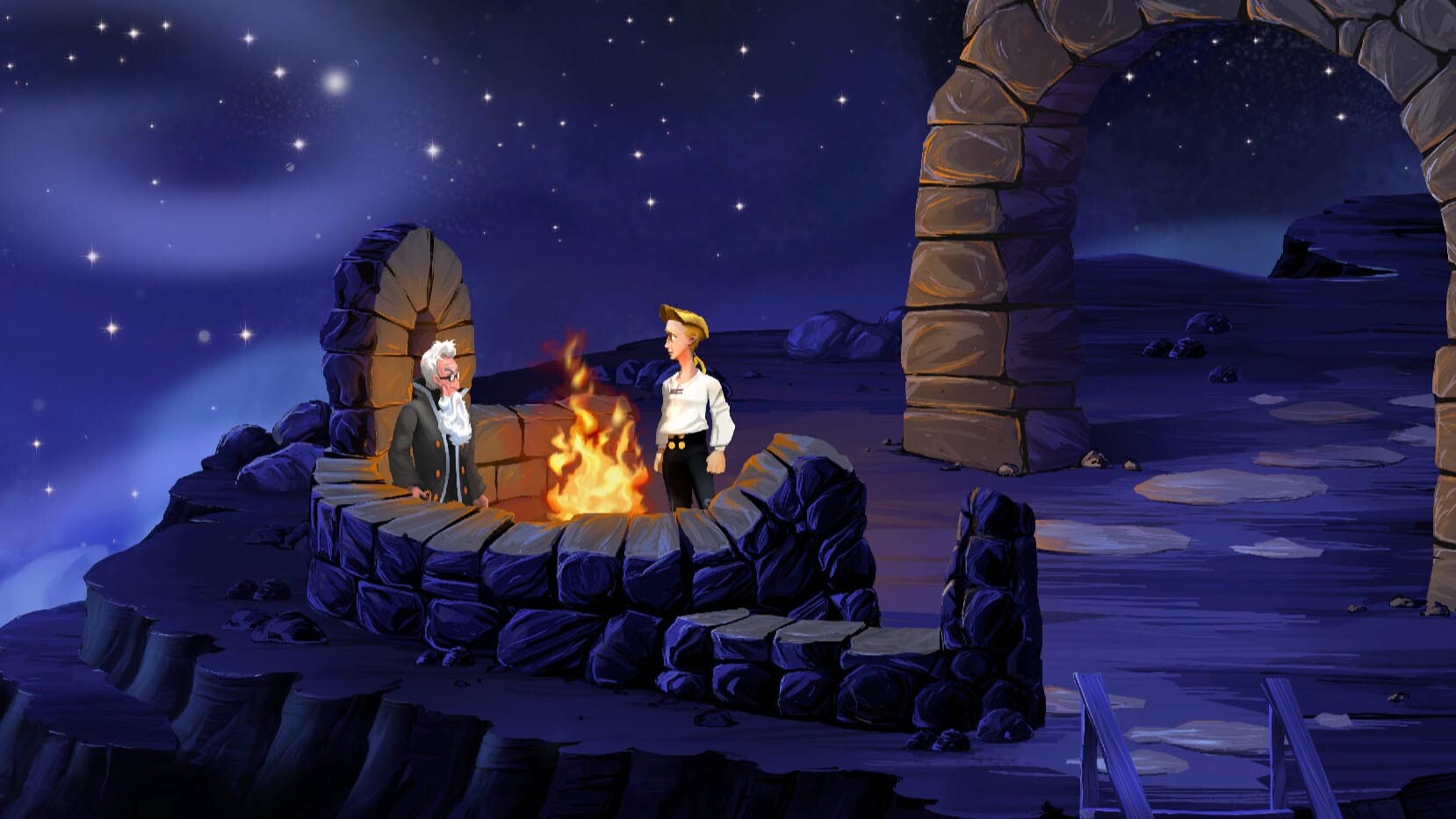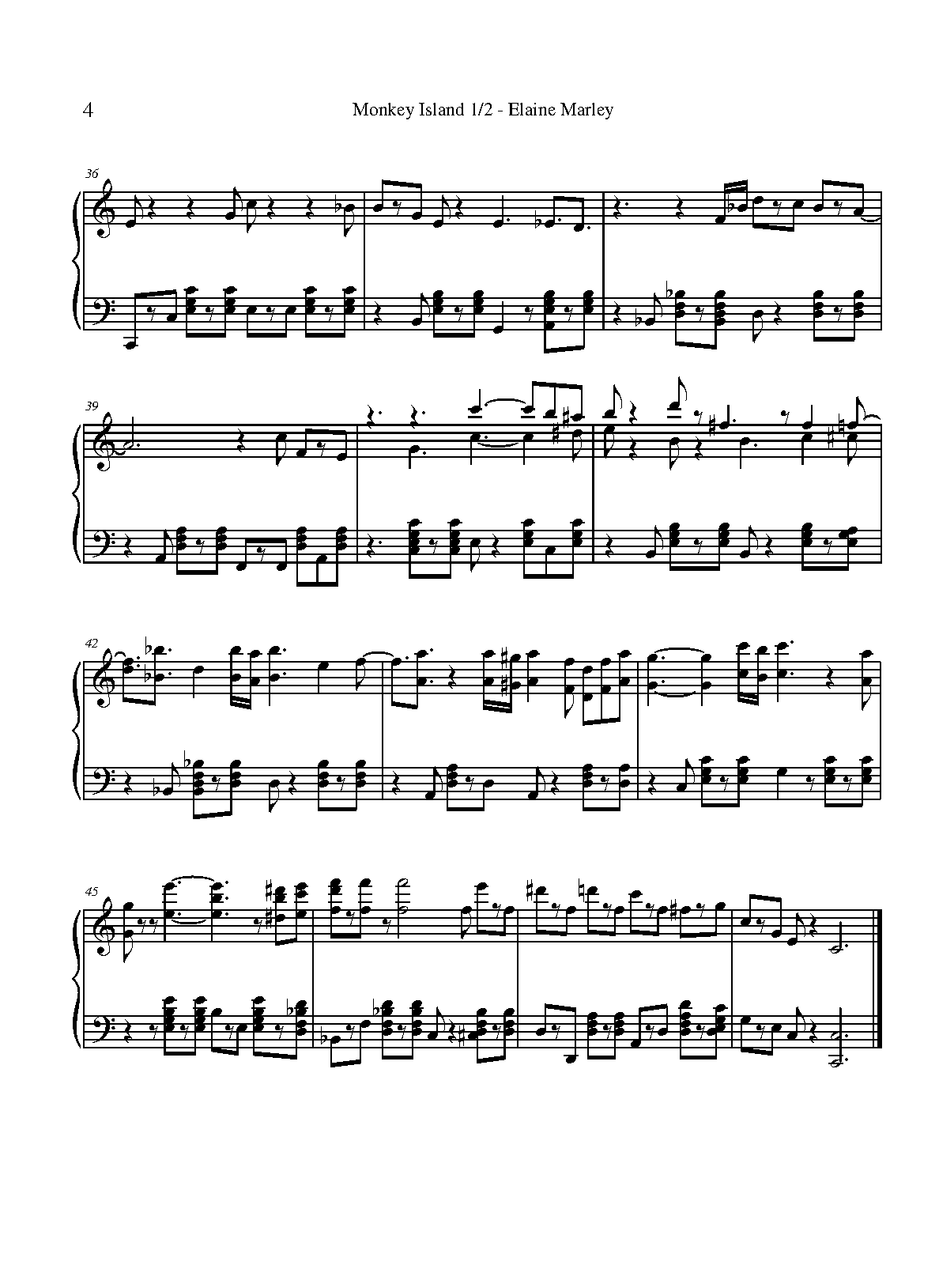
The hook first reached by the player will cause it to jump to the proper segue, and then we're back to the outside theme. When the player then exits the boat, the jump hooks are activated. The only difference is that they're linked to specific parts of the theme with jump hooks instead of being chosen randomly.

The MIDI player then reaches a marker, plays the segue, and then the theme of the boat. When the player enters a boat, one of the segues (transitions between different musical pieces) is chosen randomly and the markers are activated.

Track 1 has a row of identical markers that marks where these segues can be played so that the result sounds nice. The last track simply ends the music and is used for when the player enters the map of Scabb Island. The subsequent tracks in that file are segues that make the music slide neatly into the theme of each boat. When the player walks around outside, track 1 of a MIDI file is played on a constant loop. Woodtick is one of the areas in Monkey Island 2 where iMUSE really shines. A game without iMUSE would typically just end the track abruptly or do fade-out. If the player leaves the area, iMUSE simply activates one of those hooks and when it is reached, the MIDI player jumps to the right tracks and the music ends properly. Track 1 can then have jump hooks placed in the right places going to these endings that when played back makes musical sense. The advantage of this is that the theme playing on a loop in one area can be on track 1 and its endings be on the subsequent tracks. The hooks are again divided into types, including jumps, transposes, and enabling and disabling instruments.Ī MIDI file has the music divided into tracks and the files used by iMUSE are in format 2, which means that each track is a completely separate musical piece. The script would therefore just run a command to listen for a certain hook and then run its command. This could be everything from pauses to fadeouts.Ī hook, on the other hand, contains not only an ID number, but also what should happen when the hook is encountered. The command was put in a queue and told to activate once a marker with a certain ID number was encountered. A marker was put in a MIDI file when the game's script had to run a particular command when the MIDI player reaches the marker. Markers and hooks are two types of these events. It used so-called sysex events saved in the MIDI files themselves to accomplish this.

What separates iMUSE from other MIDI playback engines of the era was that it was capable of dynamic music triggered by the player's actions. They therefore take up much less space than digital audio recordings, something which was a big concern back in those pre-CD-ROM days.
#THE SECRET OF MONKEY ISLAND MIDI HOW TO#
The reason for this is that MIDI files just store information on how to play back music, not the music itself. IMUSE uses, like most games of the era, music stored in a MIDI format. Clint Bajakian also joined the team to help finish the score of the game in time. Land brought in Peter McConnell and they created iMUSE during development of Monkey Island 2.

After the game was finished, he decided to something about it. During development of The Secret of Monkey Island, Michael Land found it impossible to properly synchronize music with the player's actions.


 0 kommentar(er)
0 kommentar(er)
